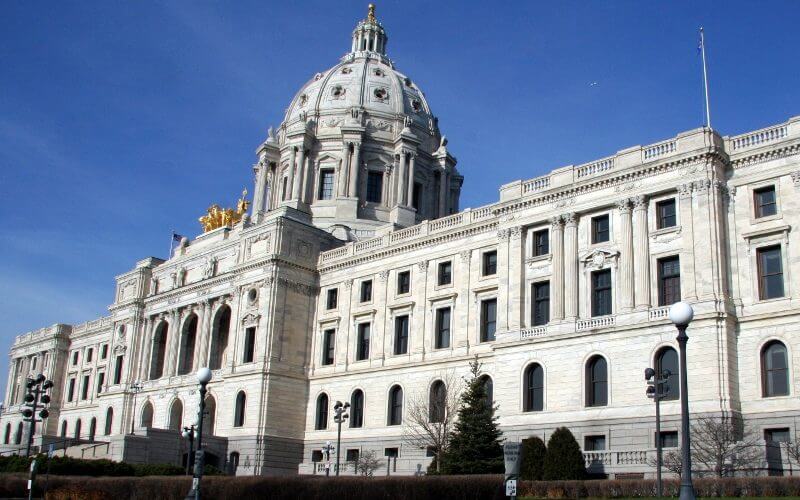 Reading Time: 3 minutes
Reading Time: 3 minutes
By Amanda Bilek, senior public policy director for the Minnesota Corn Growers Association
Following the constitutional adjournment deadline of May 20th, state legislators needed a special session to finish passing major budget bills and finalize a new two-year state budget.
The special session of the 91st legislature convened on May 24th and over the next 21 hours the legislature passed eight budget bills, a tax bill, a bill for housing infrastructure bonds and approved appropriations for constitutionally dedicated legacy funds (plus a technical corrections bill and state pension bill). On May 28, all 13 special session chapters were presented to Governor Walz. It is expected he will be signing the bills into law.
In last week’s update, I gave an overview of the final conference committee report that was finalized before the end of regular session, passed by the Senate, but ran out of time before it could be passed in the House. The final conference committee report became special session SF 1, the omnibus agriculture, rural development and housing bill, which successfully passed the Senate and House on May 28th. There are several important priorities for agriculture included in the bill and you can review specific items of interest to corn farmers here.
Several top legislative priorities for the Minnesota Corn Growers Association (MCGA) related to taxes were included in special session HF 5, the omnibus tax bill.
One of the most noteworthy items for agriculture in the final tax bill is an increase in the Ag2School credit. The credit is currently at 40 percent and is applied to the tax on property attributable to school-district-bonded debt levies.
The Ag2School credit would increase to 50 percent in tax year 2020 and would continue to increase to 55 percent in 2021, 60 percent in 2022 and 70 percent in 2023. Credit is available to all property classified as agricultural—excluding house, garage and surrounding on an acre of land of an agricultural homestead.
It is estimated the Ag2School credit increase will deliver up to $10 million in property tax relief for farmers in fiscal years 2020-2021 and $44 million in fiscal years 2022-2023. In addition to MCGA, an increase in the Ag2School credit was a priority for several agricultural groups in addition to the Minnesota Rural Education Association.
The final tax bill also conforms Minnesota tax law to federal tax law for Section 179 capital equipment expensing and bonus depreciation, applicable to the 2018 tax year. Although the capital equipment expensing deduction is increased, the current addback provision is maintained, limiting the deduction to only 20 percent in the tax year the purchase was made and the remaining deduction amount applied in future tax years.
State conformity on Section 179 capital equipment expensing and bonus depreciation provides certainty for farmers. MCGA was glad to see these provisions included in the final tax bill, even though they will likely need some work in future years to simplify the way the deduction works farmers.
Additionally, the final tax bill provided some much needed clarification for homestead classification for ownership and operating entities. This provision would allow agricultural homestead classification for properties owned by one business entity and operated by a separate business entity as along as 1) the actively engaged entity is a shareholder, member or partner of the business entity that is operating the farm and 2) more than half of the shareholders, members or partners of each entity are qualifying relatives.
Finally, the tax bill did not include one of MCGA’s top tax policy priorities—a buffer property tax credit. Although we are disappointed to not see this provision move forward, MCGA will continue to work with the Walz administration to identify opportunities to resolve the property tax classification for acres in compliance with the buffer law and no longer in production or generating income.
Despite not moving forward on the buffer property tax credit, the increase in the Ag2School credit will provide significant property tax relief for farmers and the Section 179 conformity and agricultural homestead provisions provide tax certainty for farmers. MCGA appreciates the work of the House and Senate tax committee chairs, tax conference committee conferees and the Walz administration for working together to complete a final tax bill that provides great news for farmers at a time when it is needed.
As we continue to assess the outcomes for corn farmers in the rest of the budget bills, we will continue to share details in future Legislative Updates. For this week’s update, we chose to focus on the positive gains made for farmers in the omnibus tax bill.
Be sure to follow the MCGA blog and its social channels (Facebook, Twitter) throughout session for updates from the Capitol. You can also follow me on Twitter (@AjBilek).


